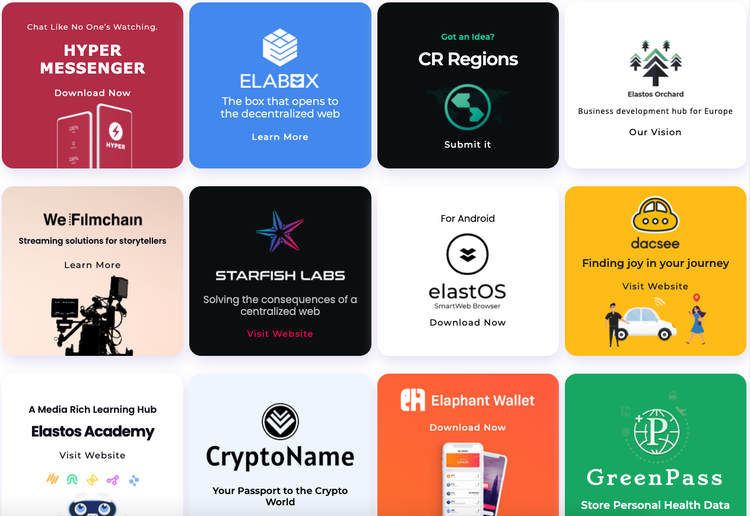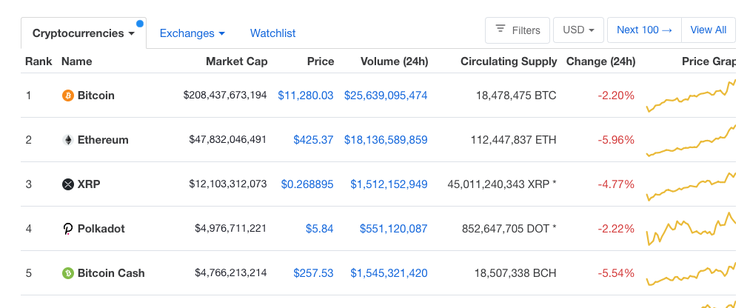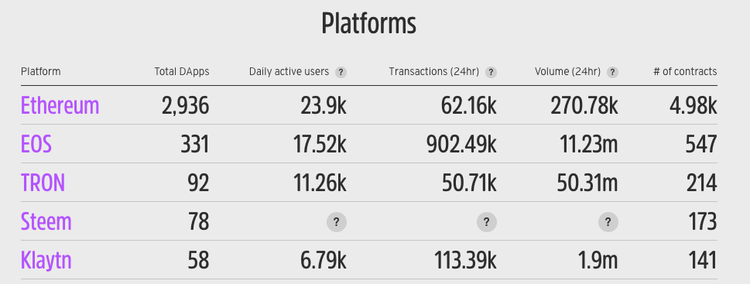Enterprise blockchain has been making something of a comeback in 2020. Since the peak of blockchain hype in late 2017 and early 2018, the general level of enthusiasm for the idea had begun to cool off. Arguably, this was because many traditional enterprises had chosen to embrace private or permissioned blockchains based on Hyperledger or R3’s Corda.
However, since 2017, there have been significant developments in public blockchains. Many platforms now achieve a better balance between scalability and security, along with new features such as interoperability.
The intervening years have also seen entirely new segments emerge out of the blockchain scene as a result of dApp development. Decentralized finance is undoubtedly the biggest, comprising exchanges, lending and trading. However, gaming, social, security and governance all feature as categories on dApp listing sites such as State of the dApps.
These new segments have broadened the scope of the term “enterprise blockchain” beyond the rather narrow idea of a traditional company incorporating distributed ledgers into existing processes.
With this in mind, here are five picks for enterprise blockchain solutions in 2020.
Elastos
The main USP of Elastos is that it offers enterprise users a complete set of services. Whereas an application developer on Ethereum can only use the platform for building smart contracts and transacting value with tokens, Elastos offers other components. These include an identity service that’s compliant with the Decentralized Identifiers (DID) standard and file storage.
Elastos also runs an ETH Sidechain offering smart contract functionality as a clone of the Ethereum Virtual Machine (EVM). Therefore, any application using ERC-20 tokens to migrate to the platform.
However, the transaction fees on Elastos are lower than Ethereum.
In terms of security, Elastos is merge-mined with Bitcoin and currently has over 50% of the total hash rate of the Bitcoin network. This puts it in the position of being highly secure against the kind of attacks recently suffered by the Ethereum Classic blockchain.
While Elastos may be less well-known than some of the biggest platforms, it’s been in operation since 2017 and already runs a range of applications.
Polkadot
Polkadot is one of the most hotly-anticipated mainnet launches of 2020. The initial version went live in May this year, and the project’s DOT token is now ranking in fourth place on the CoinMarketCap tables.
Why all the excitement? Polkadot is one of the projects ushering in a new era of blockchain interoperability. Any existing blockchain can plug into Polkadot’s main Relay chain as a shard, known as a parachain and communicate with other parachains. Furthermore, the platform is fast, with parallel processing allowing up to one million transactions per second.
Perhaps the main drawback to the platform currently is that it’s still fairly new and has several phases to come on its roadmap before all the governance and infrastructure is in place for the Relay chain to become fully functional.
Polkadot has an array of applications being developed on the platform, including Chainlink, DeFi application MANTRA DAO and data sharing platform Ocean Protocol.
Ethereum
The oldest and one of the most secure blockchain development platforms in the space, Ethereum attracts as many criticisms as it does accolades. In its favor, the platform has more development activity than any of its nearest competitors, with close to nine times as many applications.
This development activity is among its biggest strengths. Ethereum is the main domain of the DeFi movement, which is in a period of unprecedented growth and attracting more development due to the easy compatibility between ERC-20 tokens.
However, the increasing traffic is also causing high congestion on the network and record-high transaction fees.
Developers are working hard to solve the issues, with the ETH 2.0 upgrade due to launch the first iteration on mainnet imminently. However, the full implementation, solving the current scalability challenge, is still one or two years off, and how it will unfold is very much an unknown.
Despite the challenges, Ethereum continues to gain traction with enterprises. The Enterprise Ethereum Alliance boasts high-profile members, including Accenture, Microsoft and the Bank of New York Mellon.
Thundercore
Thundercore is a public blockchain running its own version of the Proof of Stake consensus in a bid to solve the scalability challenge. As such, it can achieve up to 4,000 transactions per second, with a one-second confirmation time, putting on a par with traditional payment networks such as Visa.
Like Elastos, Thundercore is EVM-compatible, meaning dApps can easily migrate from Ethereum if they’re looking for improved scalability. Anyone can also interact with Thundercore using the Hub application, which is downloadable via Google Play or the Apple App Store.
Users can sign in using their Google or Facebook account, and start transacting with the in-built wallet and using Thundercore-based dApps. In this sense, it’s highly accessible compared to Ethereum or Polkadot, which are very much focused on the infrastructure layer above user experience.
Perhaps the main concern about Thundercore is that much of the dApp development appears to be focused on gaming. However, the company has established a partnership with Chainlink for oracles, and in June 2020, the Taipei City Government launched i-Voting on Thundercore.
Tomochain
Tomochain launched in 2018 and has been focusing on developing its mainnet and ecosystem ever since. The platform puts a heavy focus on security, offering a decentralized network run by 150 master nodes, with each transaction undergoing a double-validation process before it’s considered final.
Nevertheless, Tomochain manages to achieve an optimal balance with scalability, managing 1,000 transactions per second with a block time of two to three seconds.
From the enterprise perspective, another critical advantage is that Tomochain offers very low transaction fees. 1 TOMO token can pay for hundreds of transactions, and a dApp operator can sponsor transaction fees for their users.
Tomochain sells itself as a platform optimized for financial applications, which may be off-putting to those developing non-financial products or services. However, the company also offers consultancy services with partners to help integrate other verticals to the Tomochain ecosystem.
Along with applications including a DEX and staking pool, Tomochain hosts MaxBet, a gambling game platform, and Triip, an application incentivizing users to share their travel data.





